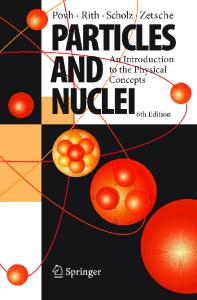Light-Matter Interaction of Strong Laser Pulses in the Micro-, Nano-, and Pico-second Regimes
- PDF / 320,043 Bytes
- 18 Pages / 612 x 792 pts (letter) Page_size
- 83 Downloads / 362 Views
1015-BB01-04
Light-Matter Interaction of Strong Laser Pulses in the Micro-, Nano-, and Picosecond Regimes Alexander Baev1, Pontus Welinder2, Robert Erlandsson2, Johan Henriksson2, Patrick Norman2, and Hans ≈gren3 1 , Institute for Lasers, Photonics and Biophotonics, SUNY at Buffalo, Buffalo, NY, 14260 2 Department of Physics, Chemistry and Biology, Linkˆping University, SE-581, Linkˆping, 83, Sweden 3 Theoretical Chemistry, Royal Institute of Technology, SE-100, Stockholm, 44, Sweden
Abstract Light propagation in a medium is sensitively dependent on the shape and intensity of the optical pulse as well as on the electronic and vibrational structure of the basic molecular units. We review in this paper results of systematic studies of this problem for isotropic media. Our theoretical approach|the quantum mechanical{electrodynamical (QMED) approach|is based on a quantum mechanical account of the many-level electron-nuclear medium coupled to a numerical solution of the density matrix and Maxwell's equations. This allows to accommodate a variety of nonlinear e ects which accomplish the propagation of strong light pulses. Particular attention is paid to the understanding of the role of coherent and sequential excitations of electron-nuclear degrees of freedom. The QMED combination of quantum chemistry with classical pulse propagation allows to estimate the optical transmission from cross sections of multi-photon absorption processes and from considerations of propagation e ects, saturation and pulse e ects. Results of the theory suggest that in the nonlinear regime it is often necessary to account simultaneously for coherent one-step and incoherent step-wise multi-photon absorption, as well as for o -resonant excitations even when resonance conditions prevail. The dynamic theory of nonlinear propagation of a few interacting intense light pulses is here highlighted in a study of the optical power limiting with platinum-organic molecular compounds.
I.
INTRODUCTION
Nonlinear optics has developed into an extensive branch of science presenting many models which mimic certain aspects or special e ects. When light propagates through a real system one faces the problem of having di erent physical e ects operating simultaneously, in particular so in the nonlinear regime. In such cases a uni ed theoretical approach is needed which takes into account the complexity of the many-level electron-nuclear medium as well as a variety of nonlinear e ects which regulate the propagation of strong light pulses. In this review we demonstrate the usefulness of a uni ed theoretical tool, coined the quantum mechanical - electrodynamical (QMED) approach, in nonlinear optics. We show that the method aids the understanding of pulse propagation in nonlinear media and the formation of many-photon spectra which is essential in order to tailor structure-property relations for nonlinear materials and so to improve their use in technical applications. For example, one salient feature of many-photon spectra is that they in general are complicated by t
Data Loading...











